Play-Based Learning: Building a DIY Play Corner At Home
- Family

As modern parents, it's easy to feel like we're not keeping up with other families' glamorous trips overseas, Insta-worthy staycations and educational visits to museums, galleries and exhibitions. But what if we told you that those things aren't anywhere near as important as giving your child the time, space and support to create their own magic, as a key way to develop lifelong skills that bolster learning and positive behaviours?
KU Children's Services provides engaging play-based environments that offer a broad range of experiences for children, with educators who know how to guide play to extend your child's development - AND you can also foster this experience at home!
We've teamed up with KU Children's Services to provide the ultimate guide to enhancing play-based learning at home—and some tips on creating your very own at-home play corner.
Play-Based Learning: Building a DIY Play Corner At Home
Play-Based Learning at a Glance

A foundational principle of play-based learning is that play-based programs promote positive learning dispositions, or in other words—ways that children learn to approach tasks and activities that will guide their learning well beyond their early years. These include:
- Persistence: revisiting an activity and seeing it through to completion
- Curiosity: seeking to understand, question and explore
- Perseverance: sticking to something even when it goes wrong
- Helpfulness: assisting others in tasks or activities
- Taking responsibility: assuming a role to see a task through, and helping others
KU Children’s Services offers a wonderful transition between the home and a learning environment thanks to their play-based approach.
The Importance of Play-based Learning

From the moment they're born, children embark on a journey of discovery. Play is a crucial part of this journey—it's how children learn to understand the world in which they live.
Through play, they develop communication skills, creativity, imagination, and problem-solving abilities. Much of this important learning happens at home, where parents and caregivers are a child's first teachers. The interactions and experiences shared during playtime significantly impact a child's lifelong development, sparking a love for learning. This passion for exploration, learning and play is nurtured out of the home in a broad range of play-based environments at KU Services—where educators steer the playtime ship to extend your child's development.
How to Encourage Play
Invitations for play come in all shapes and sizes, and the home is the perfect place to practice. Here are three ways to encourage play at home—strategies that are all employed across KU Services to nurture a child's learning.
- Make the ordinary extraordinary: use everyday items, clothing and props to extend children’s creative exploration and imaginative play
- Join in and follow your child's lead: learn about their play interests, show value for their play and have fun!
- Share: if you're comfortable, consider sharing cultural perspectives, games and play traditions with your child’s out-of-home learning setting
Tips To Create Your Own DIY Play Corner
While we truly believe that play can take place anywhere, creating a DIY play corner at home is an amazing way to spark your child's imagination and get them to create new experiences at home. A play corner will look different depending on your child and their age, stage and interests, but some play-based learning prompts will be universal whatever your child's into.
Creating the Right Environment
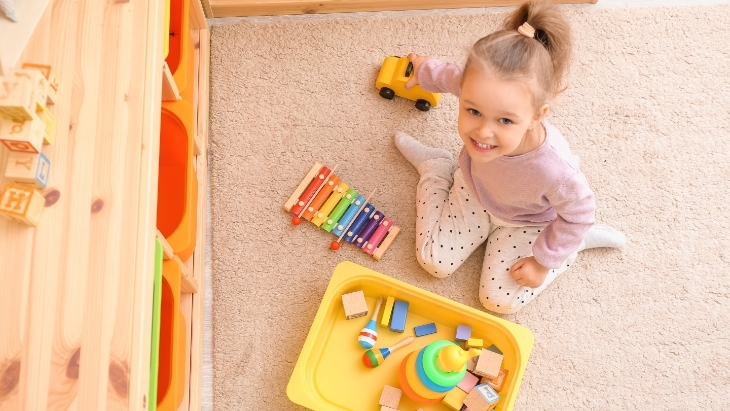
Optimising play-based learning at home with an intentional DIY play corner involves creating a welcoming, inviting space that is engaging, stimulating and conducive to exploration and creativity.
Choose a quiet, safe, and easily accessible area in your home and differentiate zones for various types of play. You might want to include a reading nook, an art station, a building area and a sensory play section. Get your child involved in brainstorming and organising the play corner. Find out what their favourite activities are at childcare and include them in your set-up! Arrange the play corner so children can access and return items on their own, fostering independence and responsibility.
Top 10 Essential Elements for a DIY Play Corner
Here are some things to think about including in your DIY play corner:
1. Sensory Materials
If you are happy to embrace a little mess, try sand or rice trays, and water play items like cups, funnels and water wheels. Textured items like feathers, fabric swatches and sensory balls will help your child tap into their imagination.
2. Books

Create a reading area with a variety of age-appropriate books, comfortable seating (bean bags, cushions), and a small bookshelf to keep books organised.
3. Pretend play props
Dress-up clothes and accessories, play kitchen or grocery store setup, dolls, action figures, stuffed animals, and figurines will all get plenty of use in a DIY play corner. Regular household items like towels, sheets and silk scarves can all make fun additions - anything that can be used to create a separate world.
4. Open-ended toys
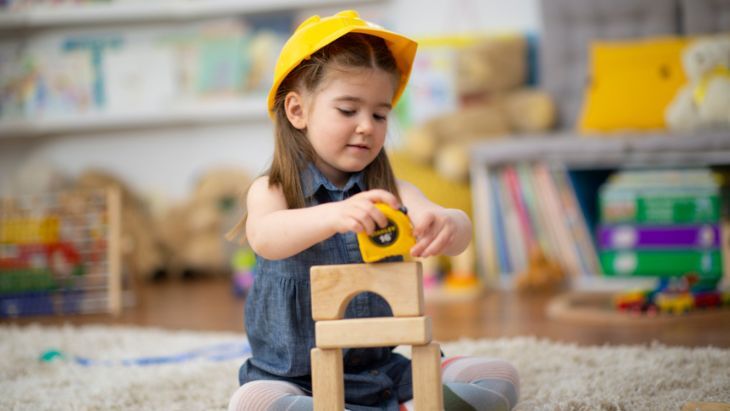
Open-ended toys like blocks (wooden, magnetic, or LEGO), play dough or clay are great inclusions in DIY play corners as they can become so many things depending on the game.
5. Loose parts
Items such as shells, stones, buttons, and bottle caps can all be used in so many ways depending on the direction the play takes. Obvious disclaimer; make sure these are age-appropriate and not a choking hazard to young children.
6. Art supplies
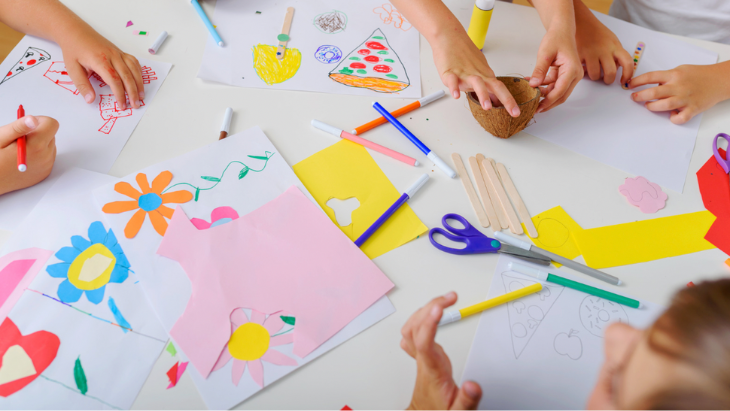
Include items like crayons, markers, coloured pencils, paper, colouring books, blank canvases, scissors, glue, tape, and stickers in your DIY play corner.
7. Household items
Tupperware, kitchen utensils and items for recycling are always a massive hit with kids in cubby houses and play corners.
8. Natural materials
Natural elements like pine cones, sticks, leaves and shells can develop a connection the world outside and stimulate sensory exploration, with hands-on, open-ended play. Add a magnifying glass for exploring details!
9. Music and Movement
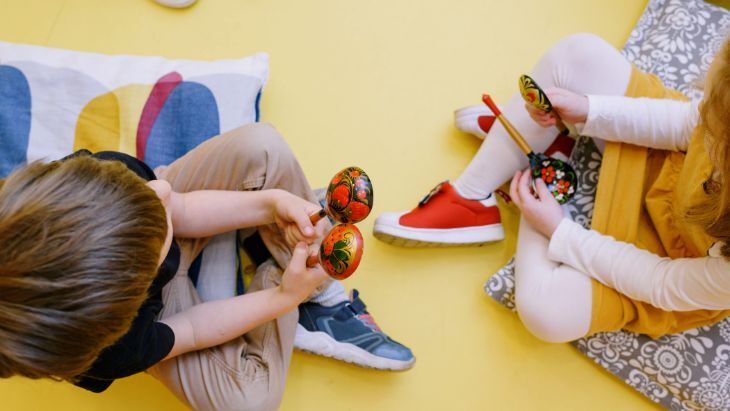
Musical instruments, dance scarves or ribbons, and a small space for physical movement can help encourage kids to express themselves through performance and use physicality as play.
10. Puzzle and Games
Age-appropriate puzzles, board games and card games are ideal for nurturing strategy, critical thinking and coordination in a fun way. They promote problem-solving and patience in children!
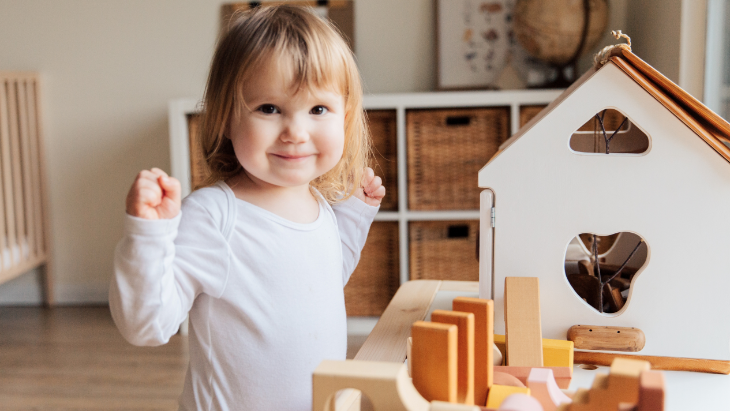
Maintaining a play-based learning environment at home provides a space for creative, open-ended play, that can help enrich your child's learning journey. Whether through sensory activities, imaginative play, or artistic expression, a DIY play area provides endless opportunities for growth and discovery.
Embrace the simplicity and joy of play, and you'll find that the educational experiences fostered by KU Children's Services can be supported at home, developing essential life skills such as persistence, curiosity, and responsibility.
More Creative Fun With Kids
Fun Trivia Questions for Kids
20 Indoor Activities for Kids
How to Make a Lava Lamp With Kids
Have you signed up for our newsletter? Join ellaslist to get the best family and kid-friendly events, venues, classes and things to do NEAR YOU!
Reviews


